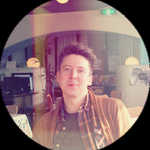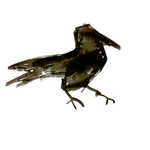

I always imagined I would be killed in a plane crash or by a disfiguring disease, but never thought about this option.
May 30th, 2014, 1pm
I know my foot doesn’t look pretty. I just want to show you those two small dots on the side. That’s where a poisonous snake bit me.
Three years ago, J. and I were taking a short vacation in Taketomi Island, a tiny island near Okinawa’s Ishigaki Island. The place was magical: many streets are covered with white sand, traditional ryukyu style houses beautifully preserved, tons of butterflies everywhere, and the ocean crystal clear. We stayed at a quiet inn located in the village of about 300 people.
The dining room was separate from the inn, but only a minute away. We had a wonderful dinner and I asked the waiter right before leaving, if there were any “habu,” notorious poisonous snakes, around here. He was still new in the village and told me he hadn’t seen any yet. The other waiter said the same. J. and I said goodnight and stepped outside. Then, as soon as we passed the gate, I felt an acute electricity run through my left foot. I quickly lifted up my foot and then caught at the corner of my eye a big olive-brown snake escaping into the darkness. I even saw those dark blotches of scales, every one of them.
“Babe, I think I was bitten by a snake.”
J. was walking ahead of me. He turned around, “What?!”
“I said, I think I was bitten by a snake.”
“What do you mean you think you were bitten by a snake?!”
We rushed back to the dinning room and told the hotel staff what had just happened, but the waiters were laughing. But as soon as they saw two purple marks slowly appearing on my foot, they turned pale and started freaking out, having no idea what to do. I was much calmer than they were. I asked for a thin rope so that I could tie it around the ankle to stop the poison from circulating. Then one of the waiters brought me a beautiful decorative ribbon. Nice—I can wrap myself as a gift. Watching them becoming more frazzled, I thought: “I always imagined I would be killed in a plane crash or by a disfiguring disease, but never thought about this option.”
Finally, the hotel owner’s son took me to the island’s only clinic, just a few rooms in size. The doctor arrived ten minutes later and said: “I am drunk, but no worries.” I could smell beer and whisky on his breath. Luckily, the nurse was alert and swift. She cut the wounds to squeeze out the poison and gave me a couple of antidote shots. I thought that they would have to give me a blood serum, but she explained that some people have a strong allergic reaction and die. That would be the last resort. Meanwhile, four local dudes were watching the whole procedure while J. was averting his eyes. They were sharing some memories: “Hey, do you remember? When one of them bit me as a kid, you sucked the poison out of the wound.” “Oh, yeah. You sucked mine, too.” Nice.
The pain I felt that night was beyond words. I wanted to cut my foot to get over the pain, which was like an ugly troll crashing and grinding my foot with a heavy pointed stone. On the top of that, a storm suddenly came, and every clap of thunder shook the entire room.
Next day, the pain completely disappeared, and it was a beautifully sunny day. The entire village knew that I was bitten by a snake. One old lady at a noodle restaurant told me, “It came to greet you.” Well, thank you. I was fine for the rest of the trip, but two weeks later in Tokyo, my foot was so swollen that I could hardly put my sneaker on. Uncomfortable, but there was no pain.
My regular doctor turned out to be a former resident of Ishigaki Island. He knows a lot about poisonous snakes. According to his explanation, my foot still remembers the trauma of the poison. That’s why when I scratched it, the immune system overreacted. He prescribed me steroid pills and asked me whether I knew why every street in Taketomi Island is covered with white sand.
“Oh yeah, that was beautiful.”
“Snakes come out at night, and you can see them well on white sand.”
Even three years later, those purple dots are still visible.




















